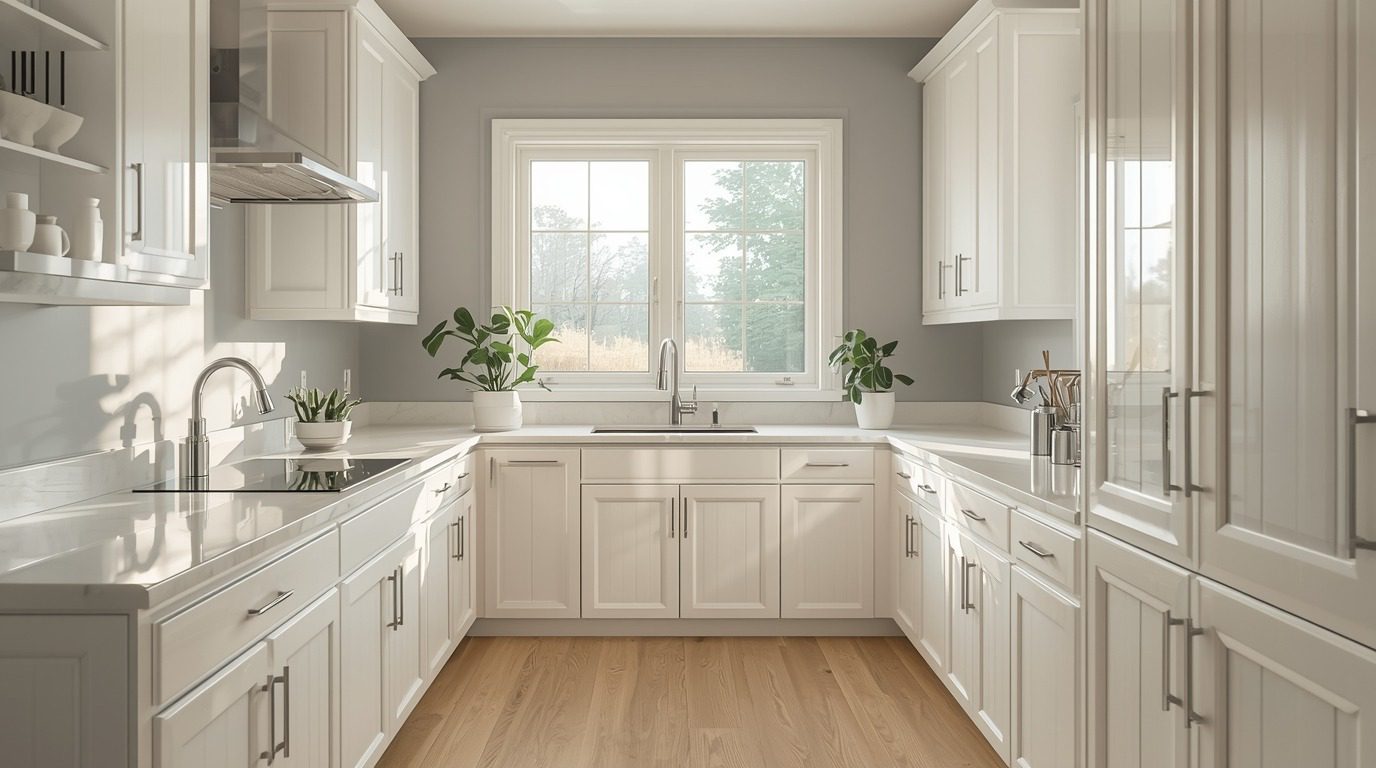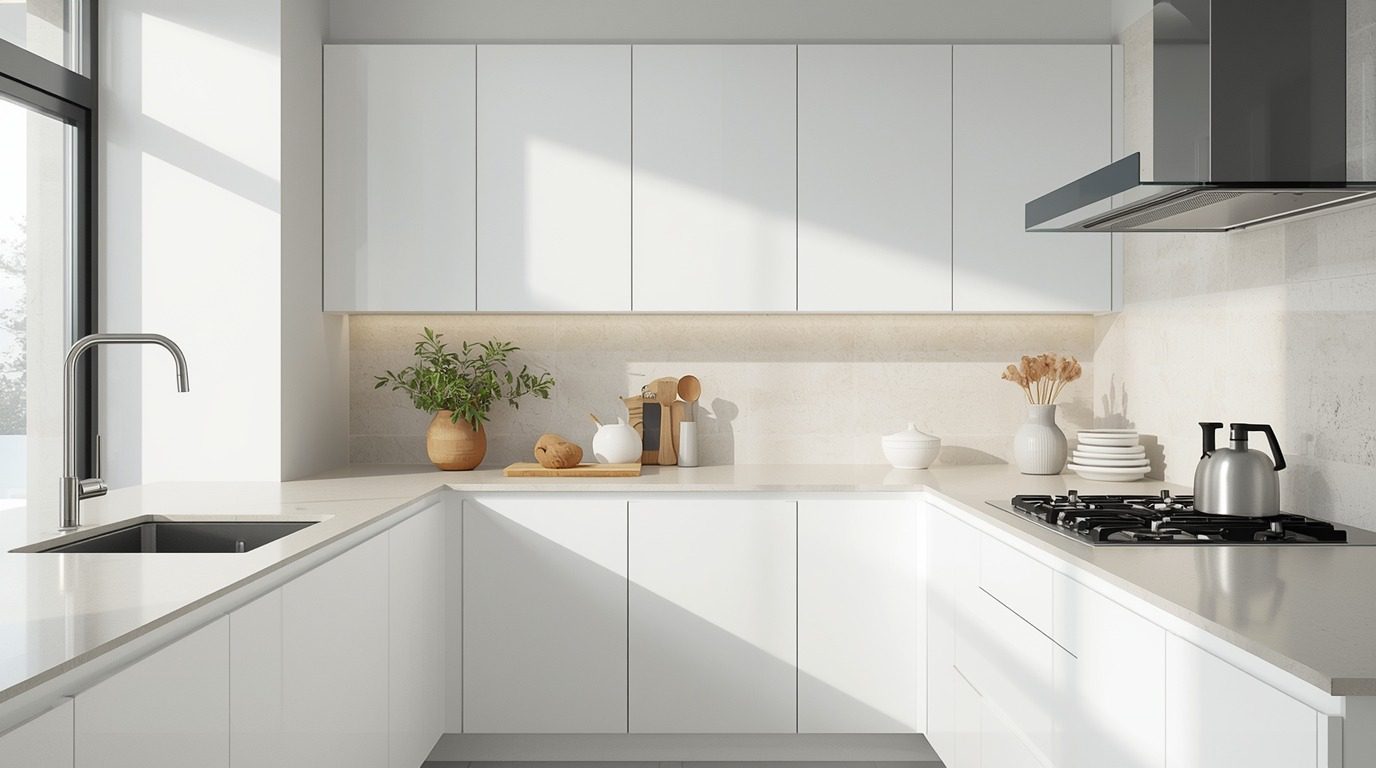The kitchen is often the heart of a home, where family members cook, gather, and socialize. In this space where practicality meets aesthetics, white kitchen cabinets are a design trend that still remain in style. They add warmth and make the room feel larger. White cabinets may work best since they can brighten up and open up any kitchen and create a welcoming atmosphere.
Small kitchens can feel spacious with white kitchen cabinets. This color reflects light, so it can brighten up the space and make small spaces seem more spacious. White cabinets are ideal for homes with a compact kitchen where you want to create an illusion of plenty of space in the room.

A Timeless Choice
As design trends for the kitchen come and go, the allure of white cabinets does not fade. Its classic appearance blends well with all types of styles, ranging from modern to traditional. Other elements, such as backsplashes or countertops, can be upgraded easily. Homeowners never have to stress about white cabinets clashing with anything else. This characteristic makes them a wise investment.
Enhancing Natural Light

Kitchens with less natural light can really benefit from white kitchen cabinets. It is a color that reflects light and makes the room look bright. This can add brightness and warmth to a darker space. If your home has very little natural light or small windows, white cabinets can brighten up a space and make it feel less enclosed because of their ability to reflect light.
Versatility in Design
White cabinets provide a neutral starting point. They mix well across color and material. They can be matched with bold colors or subtle shades; they will be a perfect fit, regardless of your design choices and preferences. This flexibility makes it easier to refresh parts of the kitchen without a full renovation. Homeowners can switch things up and still keep those classic cabinets just by changing out accessories or wall colors.
Easy Maintenance

While some people might caution against white cabinets because they are difficult to maintain, these cabinets are surprisingly easy to clean. Gone are the days of fingerprints ruining your kitchen, as many modern cabinet finishes and materials repel stains and smudges. Regularly wiping them with gentle cleaners is enough to make them look fresh. The color is light, so it does not show dust as easily as a dark color and does not need to be cleaned often. This practicality and ease contribute to their popularity in busy households.
Increasing Home Value
A lot of people are attracted to the timeless and clean look of brick, making your home sell faster. A kitchen that seems larger and brighter is often seen as more valuable. A unique kitchen can be a game-changer in competitive real estate markets. White cabinets offer a blank canvas that helps potential buyers visualize their aesthetic in the space.
Encouraging Personalization

White cabinets remain open to change without taking over the room. They serve as a simple foundation with complementary shades to many textures and patterns. Homeowners can combine them with different countertop materials, hardware finishes, or backsplash designs. This allows for creativity and personalization without sacrificing function. For anyone who likes to switch things up regularly, being able to alter the finer points of decor without a full-blown renovation is a huge benefit.
Conclusion
The bright and open look of white kitchen cabinets instantly adds warmth to your space while also making it feel more functional. These cabinets make kitchens look more spacious, reflect natural light, and also give a classic look. Flexible in their design, they can easily be personalized, while their relatively low maintenance requirement means they are practical for a busy household. Additionally, they also add value to the house and appeal to prospective buyers. White cabinets are a great option for anyone who wants their kitchen to look more inviting and stylish.

